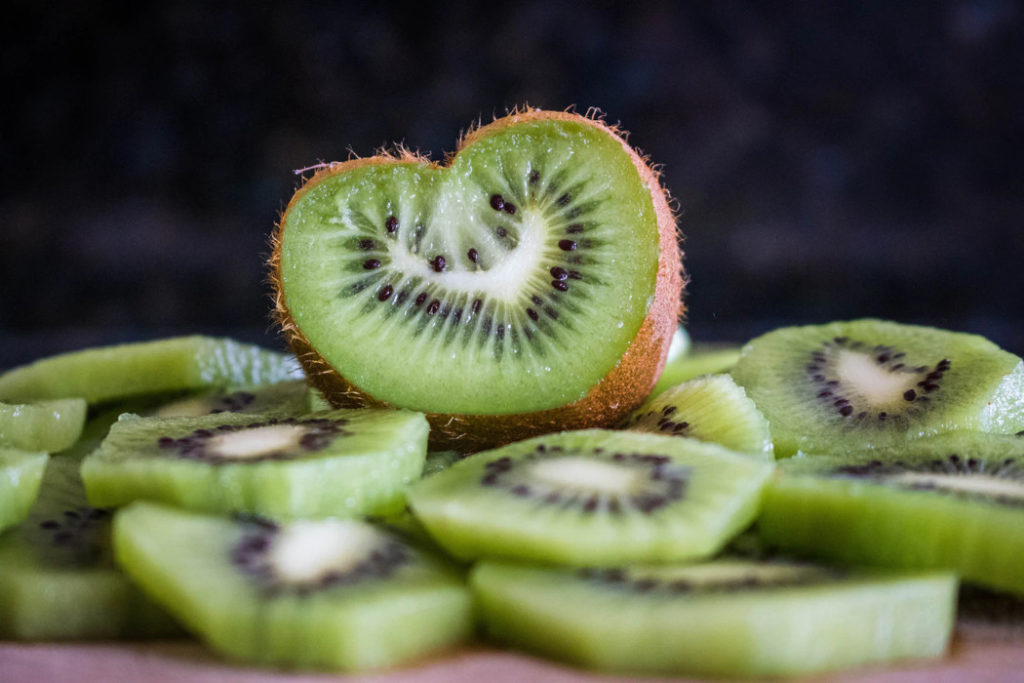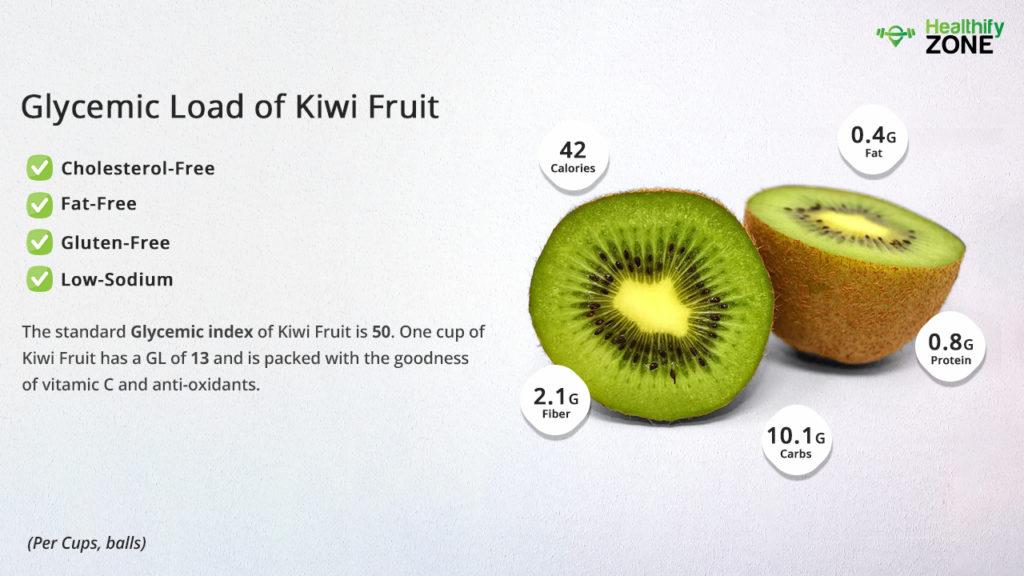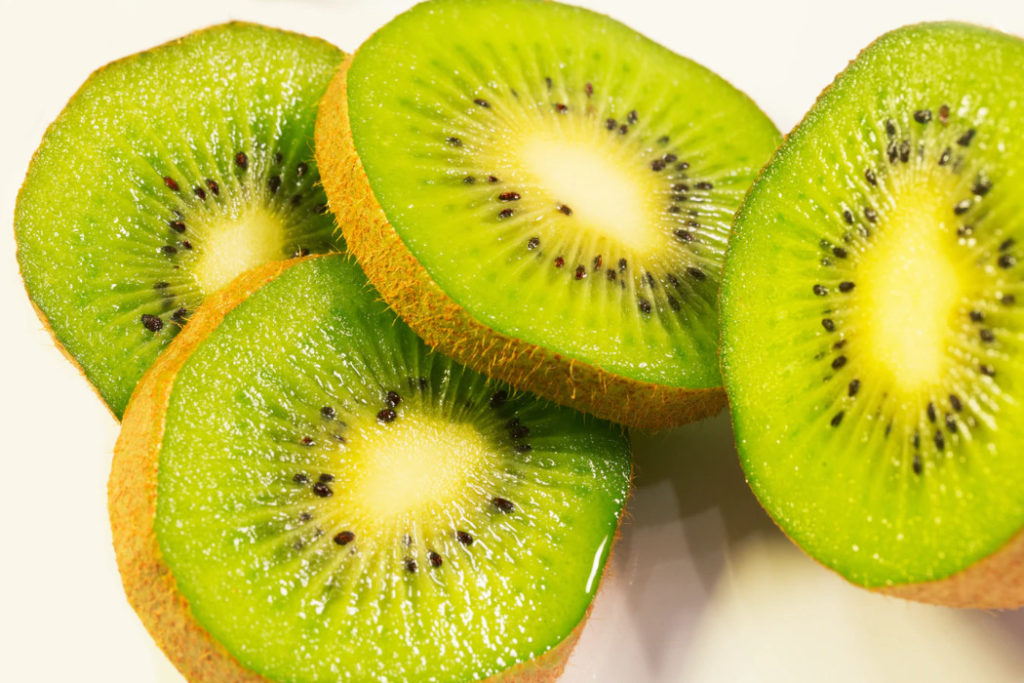The calculation of carb content of a given food with the pace with which it increases your blood glucose levels is reflected in the Glycemic Load. In the Glycemic Index, a number is assigned to each food item concerning the GL, and this is an easy way to compare and find healthier sources of nutrients according to the blood glucose levels. Glucose leads to a higher blood glucose response in comparison to fructose.
Kiwi fruits are really small and are packed with flavor and nutrition. The International GI Tables have found that it has a GI of 50, which is high. They can be grown all year long and are a good source of fiber, vitamins, and antioxidants. It has a variety of health benefits, and you can find it in the form of supplements too. They come with black seeds and fuzzy peel, both of which are edible. However, people choose to peel off the latter.

Kiwi Fruits are known to boost the immune system, and it comprises healthy nutrients like
- Fiber
- Calcium
- Magnesium
- Phosphorous
- Potassium
- Copper
- Vitamin C
- Folate
- Beta carotin
- Leutin and Zeaxanthin
- Vitamin E
- Vitamin K
- Iron
How to Calculate Glycemic Load of Kiwi Fruit?
The standard Glycemic index of kiwi fruit is 50. The high glycemic index of the fruit helps in reducing the risks related to cardiovascular diseases. If we want to talk about diet, the key to prevent diabetes or any chronic illness is to distribute the carbohydrate consumption content throughout the day and manage the sugar levels in the body correctly—Kiwi has a lot of nutritional benefits and is recommended as of the most desired fruits in a platter.
The Formula/Procedure For Calculation of Glycemic Index of the Kiwi Fruit :
GL = GI * carbs / 100
where
- GL – glycemic load;
- GI – glycemic index;
- and carbs – the amount of carbohydrates in the portion.

| SL.NO | KIWI BY WEIGHT IN (g) | GLYCEMIC LOAD |
| 1. | 100 g of Kiwi Fruit | 7.5 (low) |
| 2. | 250 g of Kiwi Fruit | 18.75 (medium) |
| 3. | 500 g of Kiwi Fruit | 37.5 (high) |
| 4. | 1 Kg of Kiwi Fruit | 75 (very high) |
| 5. | One Whole Kiwi Fruit | 6 (low) |
| 6. | 1 Cup of Kiwi Fruit (150 g) | 13 (medium) |
Is Kiwi Fruit Safe to Consume If You Have Diabetes?
Many kinds of research have shown that eating kiwi could help lower your blood sugar levels. It is essential to maintain blood sugar levels as a diabetic patient. Given its low GL, it definitely can be consumed in small quantities. Therefore, Kiwi Fruit is suggested for treating diabetes. Diabetic patients in the appropriate quantity should consume kiwi fruit and foods containing healthy fats, fiber, and protein.
Can I Eat Kiwi Fruit During a Fat-Loss Diet?
You can eat kiwi fruit during a strict fat-loss diet. However, you must have it in a controlled way and avoid consuming more than 200 g.

- A 200 g serving of kiwi has a GL of 15 which is in the permissible levels.
- Kiwi Fruit as a salad ingredient is premissible in a fat-loss diet.
Can I Eat Kiwi Fruit During a Low-Carbohydrate Diet?
You can eat kiwi fruit during a strict low-carb diet. However, you must be mindful of the portion size that you consume. We suggest you not consume more than 200 g of kiwi fruit per servings.
Is Kiwi Fruit High in Sugar?
100 g of kiwi has 9 g of sugar and 15 g of carbs. So, essentially it is low in both. Kiwi is known to provide a variety of health benefits owing to its nutritional contents. It is helpful in the reduction of blood pressure, boosting wound healing, bettering bowel movements, and more. This must be added as a part of your healthy diet.